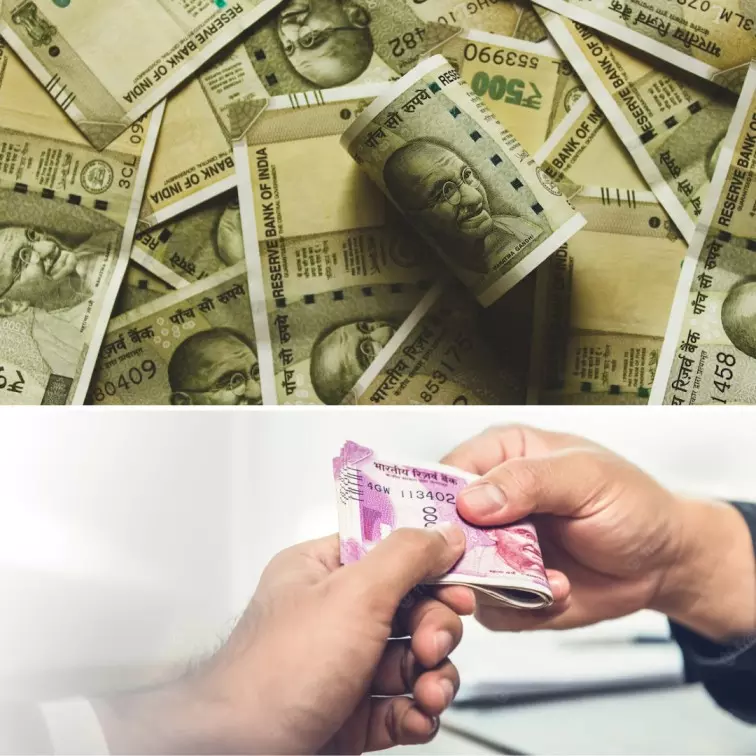Usurious Money Lending In India Runs Rampant Despite Stringent Laws In Place
Writer: Deepthi Rao
She is a postgraduate student pursuing Multimedia Journalism at Christ Deemed to be University. She believes in the power of storytelling and truth. "Do it with passion or not at all."
India, 13 Jan 2023 12:47 PM GMT
Editor : Jayali Wavhal |
She writes about gender issues, human interest, and environment.
Creatives : Jayali Wavhal
She writes about gender issues, human interest, and environment.
The practice of charging borrowers unfair high-interest rates on loans is called 'usury'. These exorbitant interest rates on usury loans, which exceed what Indian law permits, often lead to adverse effects on the borrowers' physical and mental health.
Money is one of the primary socioeconomic factors that help society function, progress and develop. In a milieu where capitalism dominates most socio-political sectors, a dearth of money is a grave problem an individual may face. To temporarily resolve the money financial crisis, individuals often turn to borrow credits or applying for a loan.
While this may seem a simple way out of the financial crunch, it's a daunting process in the long run and involves various risks. One of these includes the money lenders, for their selfish purposes, using fraudulent means to exploit those borrowing the money. Often, the risks are life-threatening.
Viciousness of Usury
The practice of charging borrowers exorbitantly high-interest rates on loans is referred to as usury. The interest rates charged on loans made through usury agreements are frequently greater than what is allowed by law. This poses the question of how do these loans form, given that the decision to borrow money is voluntary and there are several ways one might do so.
Banks and other financial institutions often refuse to give loans for various reasons, such as low credit scores or insufficient income. Consequently, people resort to loan sharks, who exploit the desperation of the ones in need and charge high-interest rates. Hefty fines and daily interest that accumulates over a period are frequently imposed for late payments. These often put the borrower at a high default risk.
On failure to return the money, the mushrooming moneylenders resort to harassment and violence to retrieve their money. This further pushes the borrowers to borrow more money, thus entering a vicious cycle of usury, or taking other extreme measures to ensure their safety.
Digital lending apps, too, have made their presence on the scene and tend to charge exorbitant rates to inflict economic harm on people.
Safeguarded By Law
The Usurious Loans Act of India, 1918 aims to shield borrowers against greedy lenders that exploit people in need of cash by charging exorbitant interest rates. Private-party lending is primarily covered under this act. The Reserve Bank of India and the Fair Practices Code for Lenders regulate lending by banks and other financial institutions.
According to the Act, a court may interfere in a loan transaction if it has grounds to suspect that the interest charged is excessive and the parties' transaction was significantly unfair. The court may also reopen the transaction, in which case the debtor would no longer be liable for excessive interest. It can also release the debtor from all obligations to pay excessive interest. If any amount has been paid in excess, the court can order the creditor to pay back whatever amount it believes is owed.
Any security provided or arrangement made to a loan may be revoked, revised, or altered in whole or in part, and if the creditor has released the security, the court may order them to compensate the debtor in the manner and to the amount that it may think reasonable.
Even with laws in place to protect borrowers from the clutches of money-blind lenders, several instances of extorting high-interest rates have occurred all across the country. In addition to stringent laws, borrowers should be educated about acceptable interest rates, so they don't get exploited.
Also Read: Ex-ICICI Bank CEO Chanda Kochhar & Husband Arrested In Videocon Loan Case; All You Need To Know
 All section
All section














